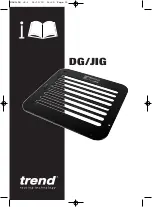
English |
15
Bosch Power Tools
1 609 92A 37W | (9.12.16)
Protect the hoses from kinks, restrictions, solvents,
and sharp edges. Keep the hoses away from heat, oil,
and rotating parts. Immediately replace a damaged
hose.
A defective air supply line may result in a wild com-
pressed-air hose and can cause personal injury. Raised
dust or chips may cause serious eye injury.
Make sure that hose clamps are always tightened firm-
ly.
Loose or damaged hose clamps may result in uncon-
trolled air escape.
Personal safety
Stay alert, watch what you are doing, and use common
sense when operating a pneumatic tool. Do not use a
pneumatic tool while tired or under the influence of
drugs, alcohol, or medication.
A moment of inattention
while operating a pneumatic tool may result in personal in-
jury.
Use personal protective equipment. Always wear eye
protection.
Wearing personal protective equipment –
such as a respirator, non-skid safety shoes, hard hat or
hearing protection – according to the instructions of your
employer or as required by the provisions for work and
health protection, reduces the risk of personal injury.
Prevent unintentional starting. Make sure that the
pneumatic tool is switched off before connecting it to
the air supply, picking it up or carrying it.
When your fin-
ger is on the On/Off switch while carrying the pneumatic
tool or when connecting the pneumatic tool to the air sup-
ply while it is switched on, accidents can occur.
Remove any adjustment tools before switching on the
pneumatic tool.
A wrench or key left attached to a rotating
part of a pneumatic tool may result in personal injury.
Do not overreach. Keep proper footing and balance at
all times.
This enables better control of the pneumatic tool
in unexpected situations.
Dress properly. Do not wear loose clothing or jewel-
lery. Keep your hair, clothing and gloves away from
moving parts.
Loose clothes, jewellery or long hair can be
caught in moving parts.
If devices are provided for the connection of dust ex-
traction and collection facilities, ensure these are con-
nected and properly used.
Use of dust collection can re-
duce dust-related hazards.
Do not directly inhale the exhaust air. Avoid exposing
the eyes to exhaust air.
The pneumatic tool’s exhaust air
can contain water, oil, metal particles and debris from the
compressor. This can cause damage to one’s health.
Pneumatic tool use and care
Use the clamping devices or a vice to secure and sup-
port the workpiece.
Holding the workpiece by hand or
against your body will not allow for safe operation of the
pneumatic tool.
Do not overload the pneumatic tool. Use the pneumatic
tool intended for your work.
The correct pneumatic tool
will do the job better and safer at the rate for which it is de-
signed.
Do not use a pneumatic tool that has a defective On/Off
switch.
A pneumatic tool that cannot be controlled with
the switch is dangerous and must be repaired.
Disconnect the air supply before making any adjust-
ments, changing accessories, or when not using for ex-
tended periods.
This safety measure prevents accidental
starting of the pneumatic tool.
Store idle pneumatic tools out of the reach of children.
Do not allow persons unfamiliar with the pneumatic
tool or these instructions to operate the device.
Pneu-
matic tools are dangerous in the hands of untrained users.
Maintain the pneumatic tool with care. Check for mis-
alignment or binding of moving parts, breakage of
parts and any other condition that may affect the pneu-
matic tool’s operation. Have damaged parts repaired
before using the pneumatic tool.
Many accidents are
caused by poorly maintained pneumatic tools.
Keep cutting tools sharp and clean.
Properly maintained
cutting tools with sharp cutting edges are less likely to bind
and are easier to control.
Use the pneumatic tool, accessories, application tools,
etc. according to these instructions. Take into consid-
eration the working conditions and the activities to be
carried out.
This reduces the development of dust, vibra-
tions and noise to the greatest extent.
The pneumatic tool should be set up, adjusted or used
exclusively by qualified and trained operators.
The pneumatic tool may not be modified in any way.
Modifications can reduce the effectivity of the safety
measures and increase the risks for the operator.
Service
Have your pneumatic tool repaired only through a qual-
ified repair person and only using original replacement
parts.
This will ensure that the safety of the pneumatic tool
is maintained.
Safety Warnings for Pneumatic Jigsaws
Check if the type plate can be read.
If required, provide
for replacement from the manufacturer.
In case of breakage of the workpiece or an accessory,
or even of the pneumatic tool itself, parts can be
thrown about at high speed.
During operation, repairs or maintenance, and when
replacing accessories on the pneumatic tool, always
wear shock-resistant eye protection. The degree of the
required protection should be separately evaluated for
each individual application.
Working certain materials can produce sparks and
metal chips which pose a danger.
Ensure that the application tool is fitted correctly and
securely.
Never place your hand near the moving application
tool.
You may be injured.
The contact protector must be securely fitted to the
pneumatic tool. Replace the contact protector if it is
faulty.
This will prevent injuries caused by touching the ap-
plication tool.
OBJ_BUCH-2096-002.book Page 15 Friday, December 9, 2016 1:49 PM
















































